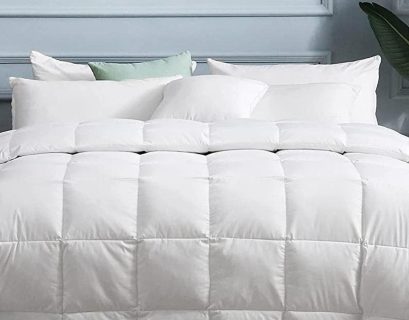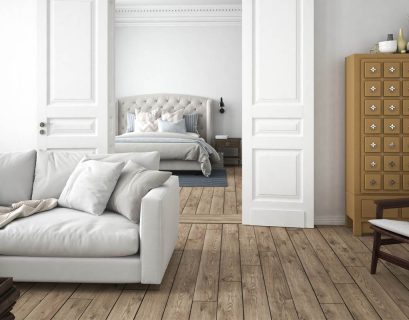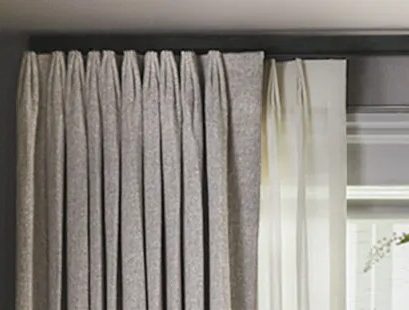As sustainability becomes an integral part of our daily lives, the choices we make in decorating our homes play a crucial role in minimizing our environmental impact. Eco-friendly home furnishings not only contribute to a healthier planet but also add a touch of conscious style to our living spaces. In this article, we will delve into the realm of sustainable and eco-conscious options for home furnishings, providing insights into how you can make environmentally responsible choices without compromising on style or comfort.
- Sustainable Materials: Opting for home furnishings crafted from sustainable materials is a fundamental step towards eco-friendly living. Materials like bamboo, reclaimed wood, recycled metal, and recycled glass are excellent choices. These materials not only reduce the demand for new resources but also repurpose materials that might otherwise end up in landfills.
- FSC-Certified Wood Furniture: The Forest Stewardship Council (FSC) certification ensures that wood products come from responsibly managed forests. When choosing wooden furniture, look for the FSC label to guarantee that the wood is sourced ethically and sustainably. This certification supports forest conservation and promotes biodiversity.
- Recycled and Upcycled Furnishings: Embrace the concept of circular design by choosing furnishings made from recycled or upcycled materials. From furniture crafted from reclaimed pallets to lamps made from recycled glass bottles, these pieces give a new life to materials that would otherwise be discarded, reducing the demand for virgin resources.
- Natural Fiber Textiles: When selecting textiles for items such as curtains, upholstery, and bedding, consider materials like organic cotton, linen, and hemp. These natural fibers are grown without harmful pesticides and are biodegradable, making them eco-friendly alternatives to conventional, resource-intensive fabrics.
- Non-Toxic and Low VOC Finishes: Many traditional furniture finishes and paints contain volatile organic compounds (VOCs) that release harmful chemicals into the air. Opt for furnishings with non-toxic finishes and low VOC paints to promote healthier indoor air quality. This choice benefits both your well-being and the environment.
- Modular and Versatile Furniture: Invest in modular and versatile furniture that adapts to changing needs. Pieces that serve multiple functions or can be easily reconfigured reduce the need for frequent replacements and contribute to a more sustainable lifestyle.
- Energy-Efficient Lighting: Home furnishings go beyond furniture and textiles; lighting plays a significant role in creating an eco-friendly home. Choose energy-efficient LED or CFL bulbs for lamps and fixtures. Consider stylish, energy-efficient lighting options that enhance your space while minimizing energy consumption.
- Vintage and Second-Hand Finds: Give new life to pre-loved furnishings by exploring vintage and second-hand markets. Shopping for used items not only reduces the demand for new production but also adds character and uniqueness to your home. From antique furniture to gently used decor pieces, the possibilities are vast.
- Biodegradable and Recyclable Materials: Look for furnishings made from biodegradable or recyclable materials. From plant-based plastics to biodegradable rugs, these options contribute to a circular economy where products can be repurposed or returned to the environment without causing harm.
- Fair Trade and Ethical Practices: Consider the ethical practices of the companies producing your home furnishings. Look for certifications like Fair Trade, which ensures that workers are treated ethically, paid fair wages, and work in safe conditions. Supporting companies with ethical practices contributes to a more sustainable and equitable global supply chain.
- Water-Conserving Fabrics: Water consumption is a significant concern in textile production. Choose fabrics that are produced using water-conserving methods. Some manufacturers use innovative processes like air-dyeing or recycled water systems to minimize water usage in fabric production.
- Minimalist Design Approach: Adopting a minimalist design approach promotes sustainability by encouraging thoughtful consumption and reducing waste. Choose quality over quantity, focusing on essential pieces that serve both functional and aesthetic purposes. This mindset not only simplifies your living space but also reduces your ecological footprint.
- Green Certifications: Look for green certifications such as LEED (Leadership in Energy and Environmental Design) or Cradle to Cradle, which evaluate the environmental impact of products. Furniture and home decor items with these certifications meet specific sustainability standards, providing assurance of their eco-friendly attributes.
- Local and Artisanal Products: Support local artisans and manufacturers who prioritize sustainable practices. Locally made products often have a smaller carbon footprint as they don’t require extensive transportation. Additionally, choosing handmade items supports traditional craftsmanship and fosters a connection between you and the maker.
- Durable and Long-Lasting Choices: Opt for furniture that is built to last. Durable pieces not only reduce the frequency of replacements but also contribute to a more sustainable lifestyle. High-quality craftsmanship and materials ensure that your furnishings withstand the test of time.
Conclusion:
Creating an eco-friendly home through mindful choices in furnishings is a journey towards sustainable living. By considering materials, certifications, ethical practices, and the overall lifecycle of products, you can make conscious decisions that align with both your aesthetic preferences and environmental values. As the demand for sustainable home furnishings continues to grow, the market offers an array of stylish and eco-conscious options, empowering you to curate a living space that reflects not only your personal style but also your commitment to a greener, more sustainable future.
























